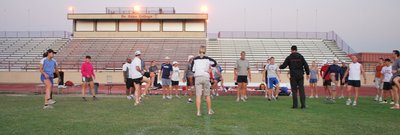
Photo Courtesy 96dpi
Many of us begin our day with a cup of coffee to get us up and going. Some of us may even continue to guzzle cup after cup or turn to other energy beverages throughout the day in order to stay alert.
The energy drink market is extremely popular, and lucrative, raking more than $500 million in sales last year, according to Consumerreports.org.
But are coffee and energy drinks the best answer for exhaustion and tiredness? More importantly, how can you increase your natural energy level so you’re not as reliant on the caffeine in coffee and energy drinks?
Well there have been some fascinating studies performed about how much caffeine actually energizes us.
For example, one study by researchers from the University of Bristol found that the “stimulating effects of caffeine may be just an illusion.”
The team of researchers conducted a two-group experiment with low and moderate coffee consumers (group one) and high consumers (group two) who all were deprived of caffeine for 16 hours prior to the test.
The researchers used caffeine and placebo (no caffeine) capsules to test the stimulating effects of caffeine in the body and afterward used various tests to gauge each group’s alertness levels. The results are puzzling and you may not agree.
The researchers found that the alertness levels of heavy caffeine consumers who received caffeine were no higher than low and moderate coffee consumers who received no caffeine in the experiment, “suggesting caffeine only brings coffee drinkers back up to normal.” What do you think?
OK, but what about the ever-popular energy drinks?
Well, although you may feel somewhat of a “jolt” from energy drinks, some doctors contest they only stimulate your central nervous system and do not create actual energy.
So, to increase your natural energy without loads of coffee which may only bring you back to a “normal” anyway and to bypass the sugar and calories in energy drinks here are some healthy natural energy tips for you to consider.
Pass the Salt: If you often feel bloated, like your carrying extra water weight around, you may be consuming too much salt. Salt makes our bodies retain water, among other things, which causes us to feel bloated and, well, overweight.
So if you lower your sodium intake and otherwise have a healthy lifestyle, you may be shocked about how much extra water weight you were holding.
Exercise is Key: We know that exercising helps keep you in shape but it also gives you more natural energy throughout your day without any added calories or sugar. It doesn’t have to be hardcore, intensive training, try walking to the store instead of driving or join a fitness club with a friend. You can make exercising fun and it can help reduce some of your stress.
Sleep is a Must: Our bodies are like high-tech, battery operated machines. We have to recharge our batteries by getting proper amounts of sleep or else we crash and burn. Sleeping not only helps us feel better and gives us more natural energy but also helps improve our interactions with people. If you’re not getting enough sleep you’re probably no fun to be around.
So, it’s important to shutdown and to relax at night. If you’re a caffeine consumer cut yourself off early to calm your nervous system and dedicate a specific time for lights out – and stick to it.
Fill up on Fiber: When we eat more fiber it fills us up faster which can help us eat less. If we eat less we avoid some extra, unnecessary calories and you will feel better and healthier. Also fiber helps our bodies digest and pass food regularly which means we’re not still carrying around Monday’s lunch on Wednesday.
Boosting your fiber intake is easy too. Take an apple to work, pick up some fresh vegetables from the market or start your day with some oatmeal or whole grains. There are also Fiber supplements that work too but they aren’t packed with the vitamins and minerals that fruits and vegetable have.
Free your Mind: Stimulating your mind with new and positive information is refreshing and can contribute to a healthier you, with more energy. Setting aside some time to learn new things is necessary to stay both mentally sharp and alert but also physically fit too – they work well together.
For example, try learning more about your body by staying on top of what you eat and reading about your diet. Or take up a new, easy hobby that stimulates both your body and mind like sports, crafting, photography or volunteering.
By incorporating any of these into your daily routine you can skip that extra cup of coffee or energy drink and hopefully move toward a healthier lifestyle full of natural energy.
Natural energy tips courtesy WebMD.










